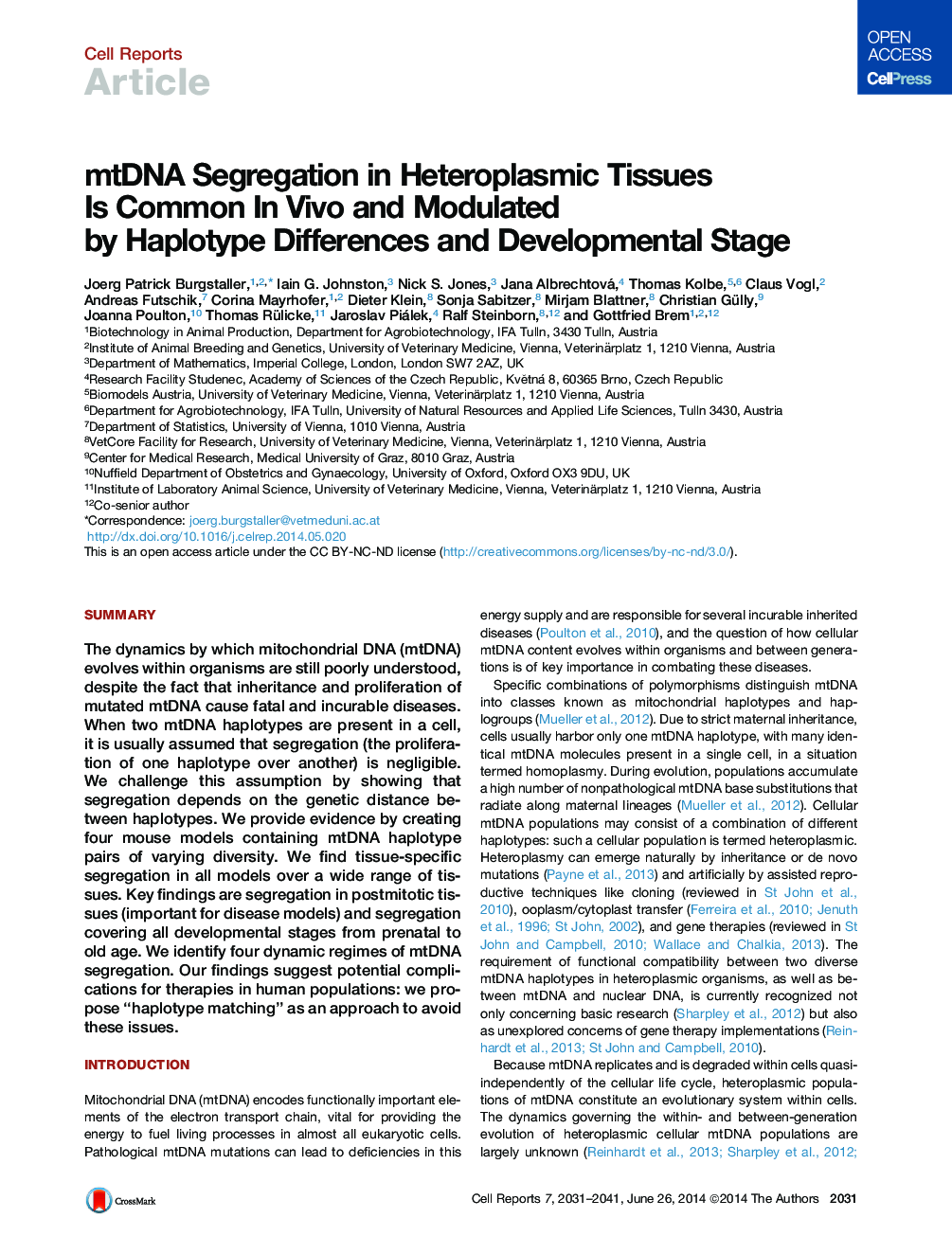| Article ID | Journal | Published Year | Pages | File Type |
|---|---|---|---|---|
| 2041343 | Cell Reports | 2014 | 11 Pages |
•mtDNA segregation is the rule, not exception, in pairings from diverse populations•Segregation occurs prenatally and within disease-relevant postmitotic tissues•More diverse mtDNA pairs exhibit stronger segregation•Mathematical analysis shows modulation of segregation kinetics through development
SummaryThe dynamics by which mitochondrial DNA (mtDNA) evolves within organisms are still poorly understood, despite the fact that inheritance and proliferation of mutated mtDNA cause fatal and incurable diseases. When two mtDNA haplotypes are present in a cell, it is usually assumed that segregation (the proliferation of one haplotype over another) is negligible. We challenge this assumption by showing that segregation depends on the genetic distance between haplotypes. We provide evidence by creating four mouse models containing mtDNA haplotype pairs of varying diversity. We find tissue-specific segregation in all models over a wide range of tissues. Key findings are segregation in postmitotic tissues (important for disease models) and segregation covering all developmental stages from prenatal to old age. We identify four dynamic regimes of mtDNA segregation. Our findings suggest potential complications for therapies in human populations: we propose “haplotype matching” as an approach to avoid these issues.
Graphical AbstractFigure optionsDownload full-size imageDownload as PowerPoint slide
